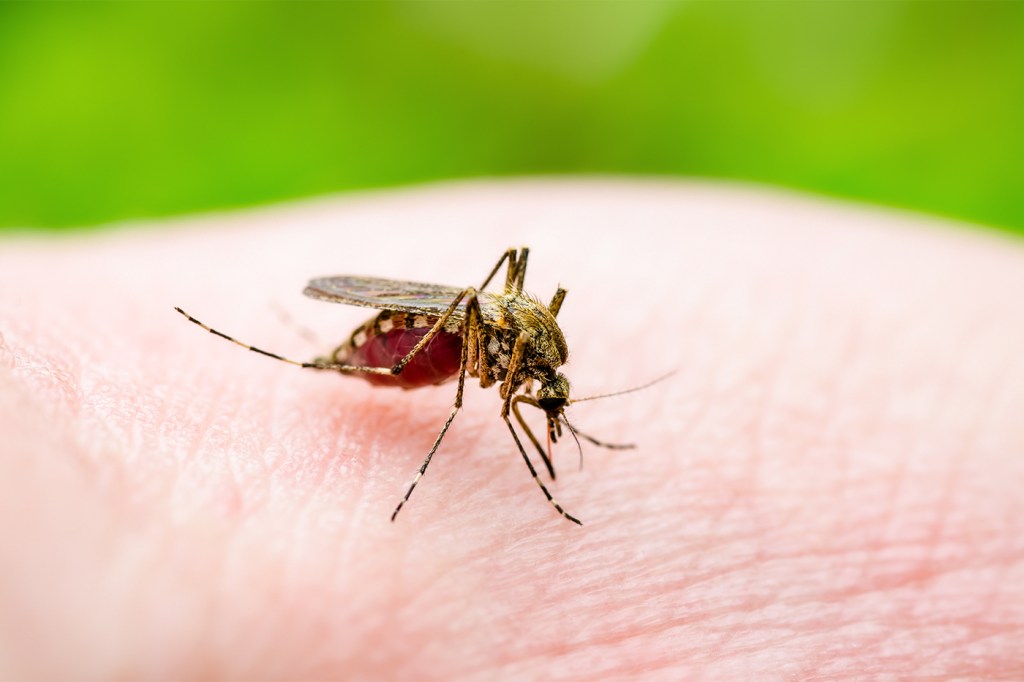How dangerous is EEE? Northeastern experts urge caution as mortality rate could exceed 50%
Larry Han, an assistant professor in public health and health sciences at Northeastern, says the death rate may be higher than the 30% reported by the Centers for Disease Control and Prevention.

Public health officials know that eastern equine encephalitis, also known as EEE, is deadly. After all, it killed a 41-year-old New Hampshire man on Aug. 19.
But the level of danger posed by the mosquito-borne virus still needs to be determined, Northeastern University health experts say.
Eastern equine encephalitis has a mortality rate of 30%, according to the Centers for Disease Control and Prevention. However, Larry Han, an assistant professor in public health and health sciences at Northeastern, says the death rate may be higher.
“If you look at case reports in Massachusetts from the last 10 years, in some seasons it’s over 50%,” says Han, who has a background in statistical and machine learning methods and infectious diseases.
“If you stratify by certain risk factors like age, the mortality rate could be even larger than 50%,” he says.
Hard to draw statistical conclusions
Most at risk are people over 50 and under 15, according to the CDC.
The reason for the uncertainty is that EEE is so rare that it’s hard to draw statistical conclusions, Han says.
The CDC calls EEE a rare but serious illness that can result in life-long health problems for those who survive.
“The main issue here is encephalitis, inflammation of the brain, which is very serious,” Han says.
“The population that suffers from severe conditions, permanent brain damage for instance, is quite high,” says Richard Wamai, a public health expert who is professor of cultures, societies and global studies at Northeastern.
The New Hampshire man who succumbed to EEE developed central nervous system disease, according to the New Hampshire Department of Health and Human Services. Family members identified the victim as Steven Perry of Hampstead, who worked for a nursing service.
Steps can be taken to reduce the risk
Communities at high risk have imposed voluntary curfews, closed parks after dusk and embarked on aerial and truck-based spraying against mosquitoes.
With no cure or human vaccine for EEE, it’s important to reduce the risk of getting bitten by mosquitoes infected with the virus, says Neil Maniar, director of Northeastern’s master of public health program.
“If you’re going to be outside, wear protective clothing — long pants, long-sleeved shirts. Use EPA-approved mosquito repellent and try not to be outside during those hours” mosquitoes are likely to be active, which is from dusk to dawn, he says.
Find your community’s risk level by going to your town or county’s website or the website of the state department of health, Maniar says.
And empty any standing pools of water in pots or kiddie pools where mosquitoes could breed.
The CDC says the few cases of EEE that occur annually are usually restricted to eastern and Gulf of Mexico states.
But some public health officials worry that cases may be on the rise due to the warming effects of climate change.
Five states with reported cases of EEE
This summer four states in addition to New Hampshire have reported cases of EEE: Massachusetts, Vermont, Wisconsin and New Jersey, according to Healio.
Until this summer, New Hampshire hadn’t seen a case of EEE since 2014, when three people were infected, two of whom died.
The case in Vermont was the first since 2012, while Massachusetts experienced 17 EEE cases and seven deaths in 2019-2020.
“There are thresholds of temperature beyond which mosquitoes don’t thrive very well,” Wamai says. He says as long as it’s warm outside with no danger of a hard frost, populations will continue to increase.
“If the breeding season goes into October, then the risk will be carried over into October,” Han says.
“We’re seeing an increase in the number of what they call mosquito days,” Maniar says.
“The summers are certainly getting hotter, they’re getting more humid, and they’re getting wetter,” he says. “When you have those conditions, you also run the risk of having an increased number of areas of standing water, which is really a risk factor for mosquito breeding.”
There’s no EEE vaccine for humans
There’s no EEE vaccine for humans, although there is one for horses.
Don’t expect to see a vaccine in pharmacies any time soon, say Han and Wamai.
They say even though EEE is a serious illness, it is not occurring in pandemic numbers of malaria, another mosquito-borne illness for which vaccines for children have been developed.
“The problem is that the cost of vaccine development is so high that no one wants to target a rare disease for which there simply aren’t enough cases or patients to make returns on their investments,” Han says.
“This is sad to say, but perhaps until EEE becomes more widespread, we really won’t know enough about it to make decisive inferences or conclusions about treatment and vaccine strategies,” Han says.
Maniar says people who have been in environments in which mosquitoes may have been present should contact their health provider if they have symptoms of EEE, which include the chills, fever, stiff neck, vomiting, headache and disorientation.





